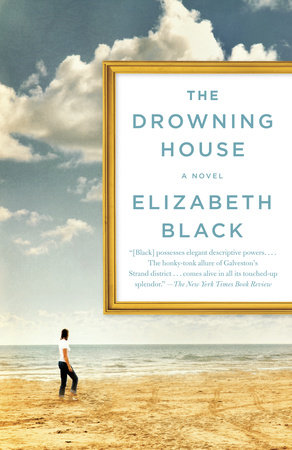The Drowning House Reader’s Guide
By Elizabeth Black


1. The Drowning House opens with two quotes, one from The Dallas Times Herald in 1966 and the other from famed American photographer Walker Evans. How does the first quote set the stage for what happens in the novel? Why do you think Walker Evans meant? How does Clare follow in his footsteps?
2. In Chapter 27, Clare states, “I had always believed that because I observed the world through the lens of my camera, because I looked at things in ways others didn’t, I saw more. Now I understood that I had failed to perceive what other(s) … registered at once.” What did you make of this realization on Clare’s part? How does Clare use photography to distance herself from other people? How does she use it to understand her own experience?
3. Consider the book’s setting of Galveston, Texas, and the author’s description of life on the island. How important is the setting of Galveston to what happens to Stella in the book? To Clare?
4. The Drowning House features women in many different roles: wife, mother, professional, mistress. How do the women in the novel define themselves in those roles? How do their roles shift over the course of the novel?
5. When she thinks about her daughter, Clare wonders whether she lived up to her role as a parent. What do children really need from their parents? How do the characters in the Drowning House fail to meet their children’s needs?
6. Grief and the different ways in which people deal with grief, is a major thread that runs throughout the novel. What insights did you gain from the novel about this complicated process?
7. Consider the legend of Stella Carraday and the truth about her life. Are there parallels to be drawn between Stella and any of the book’s modern-day characters? If so, how do they enhance the reading experience?
8. What is the difference between history and legend? How do events become part of history? Do local/historical attitudes shape what comes down to us as fact?
9. Did you know much about the Galveston Storm of 1900 before reading The Drowning House? What do you think it means to live in place like Galveston, where storms are a way of life?
10. Many of us have had the experience of returning home as an adult to find that things are not as we remembered. Why is it so important for Clare to have this near-universal experience? How does the knowledge she gains change her and prepare her for the rest of her life?
11. Almost every character in the book has a secret. Talk about the role secrets play in The Drowning House. What are some of the different motives that keep the characters from sharing what they know?
Just for joining you’ll get personalized recommendations on your dashboard daily and features only for members.
Find Out More Join Now Sign In